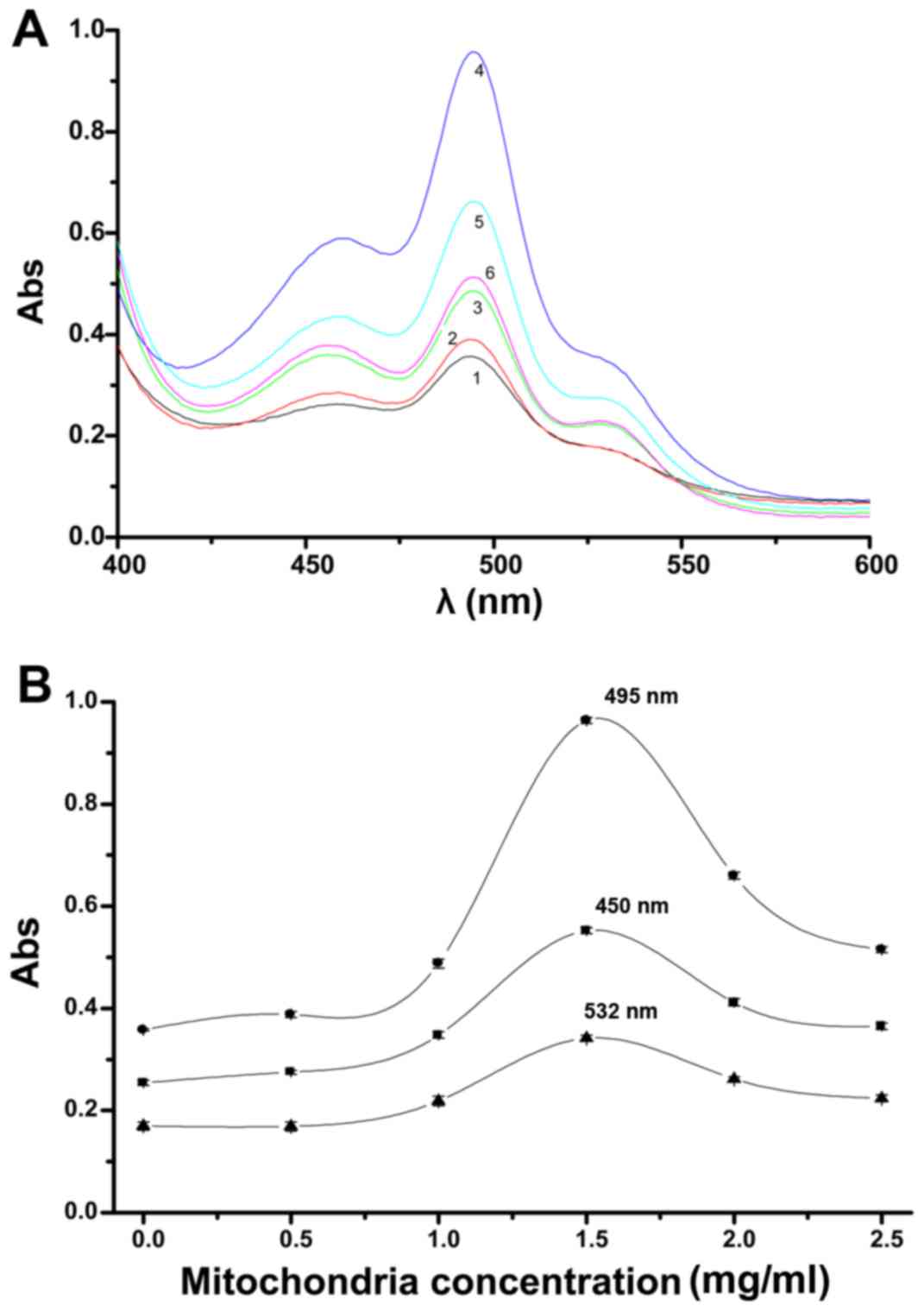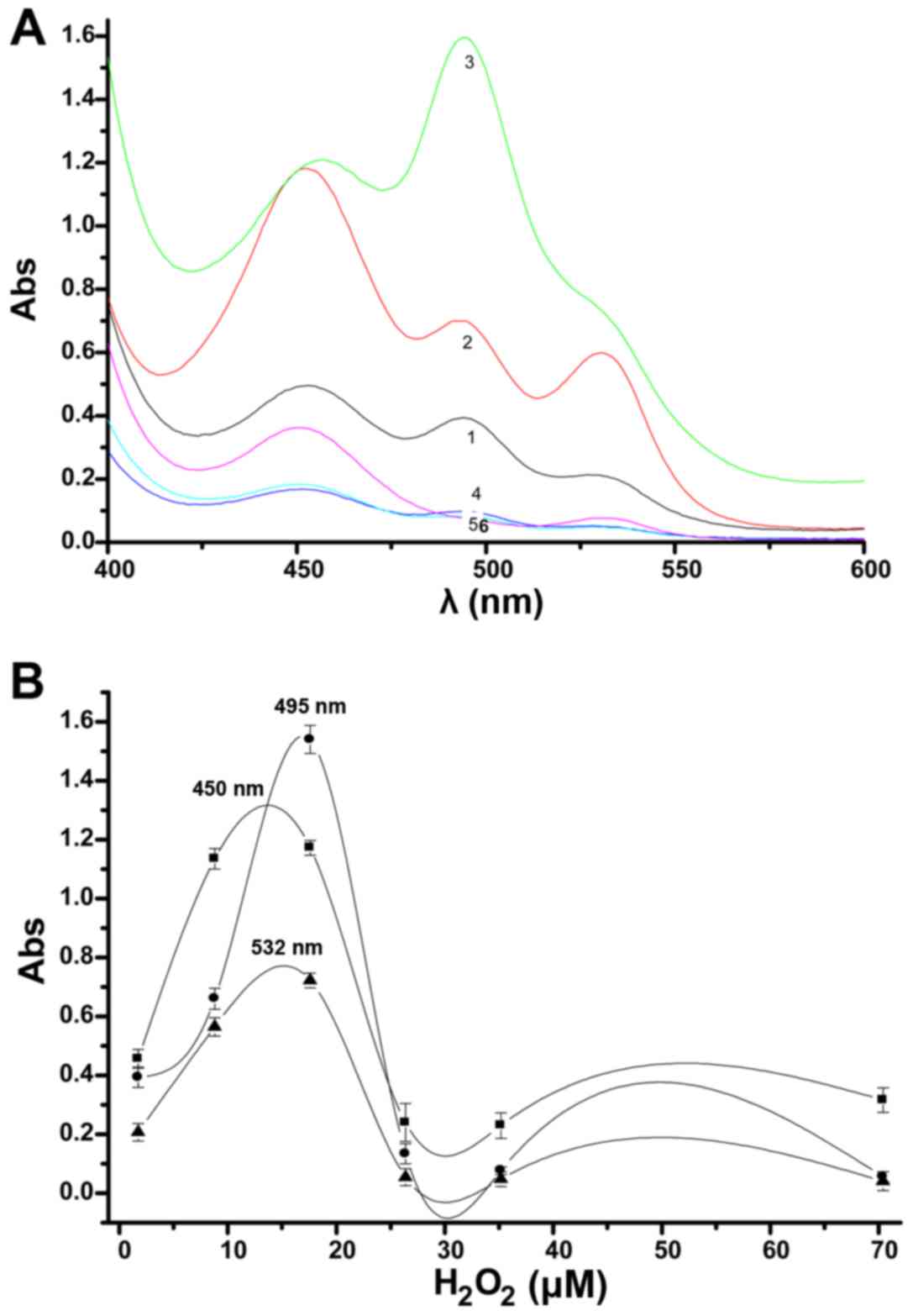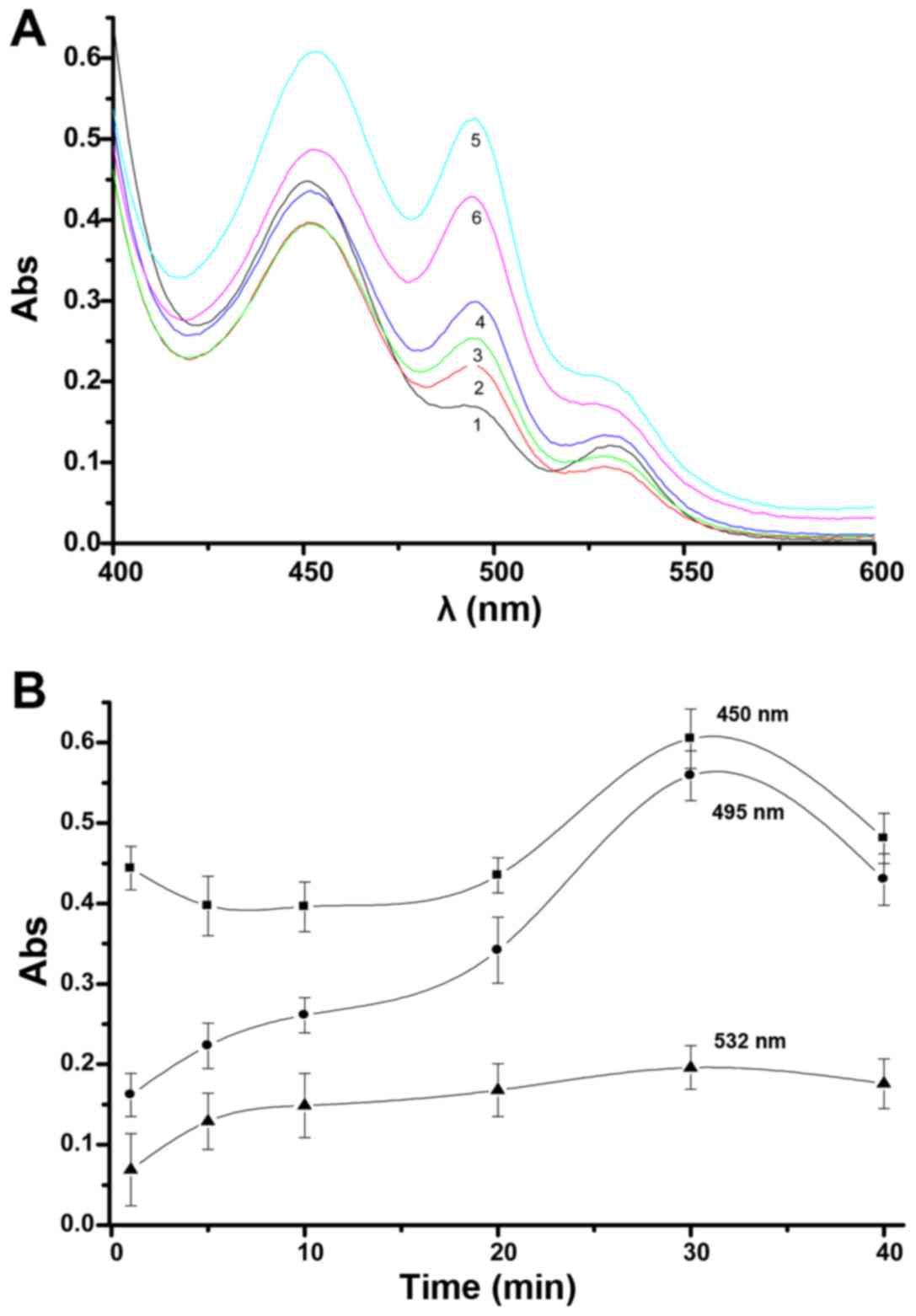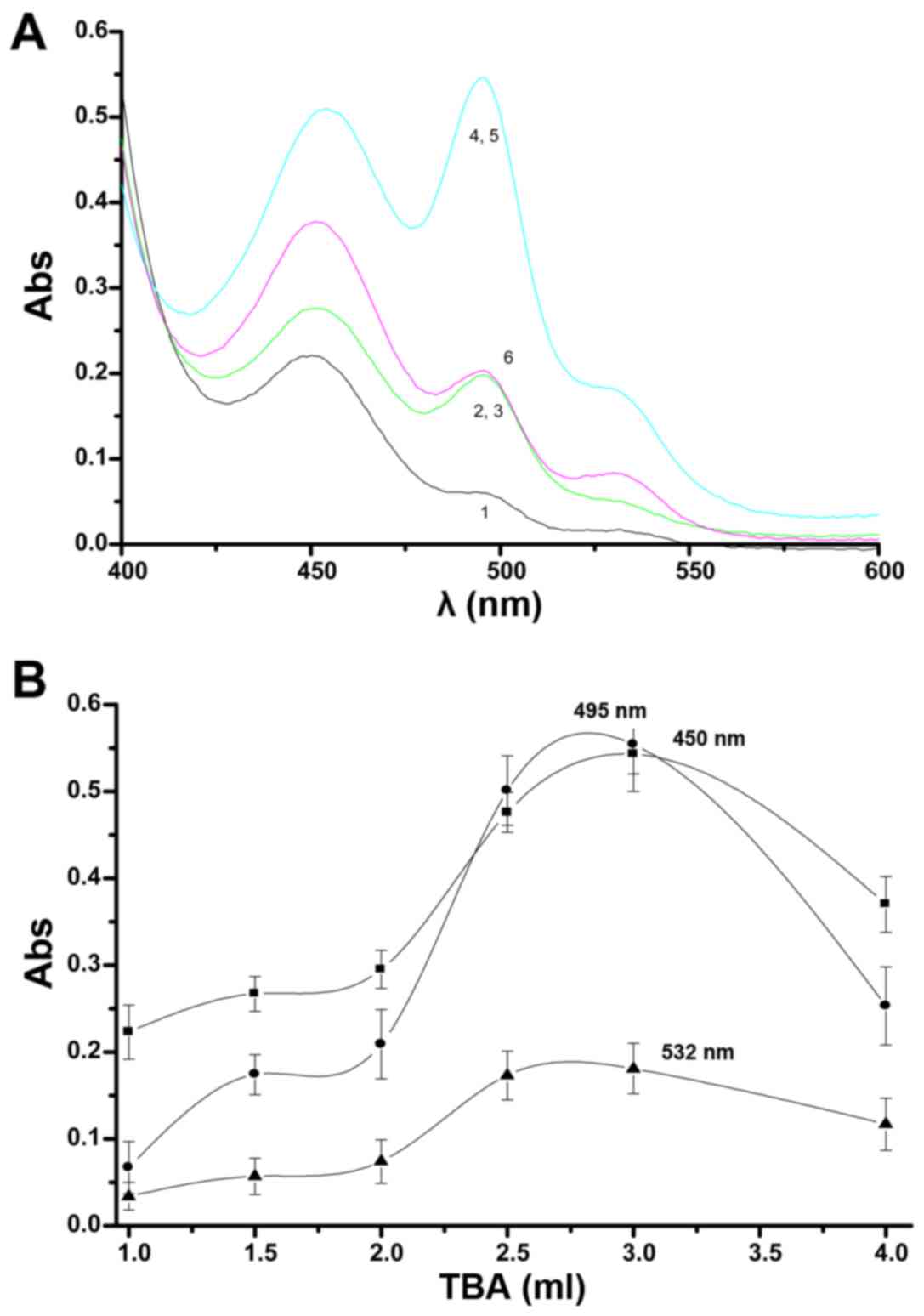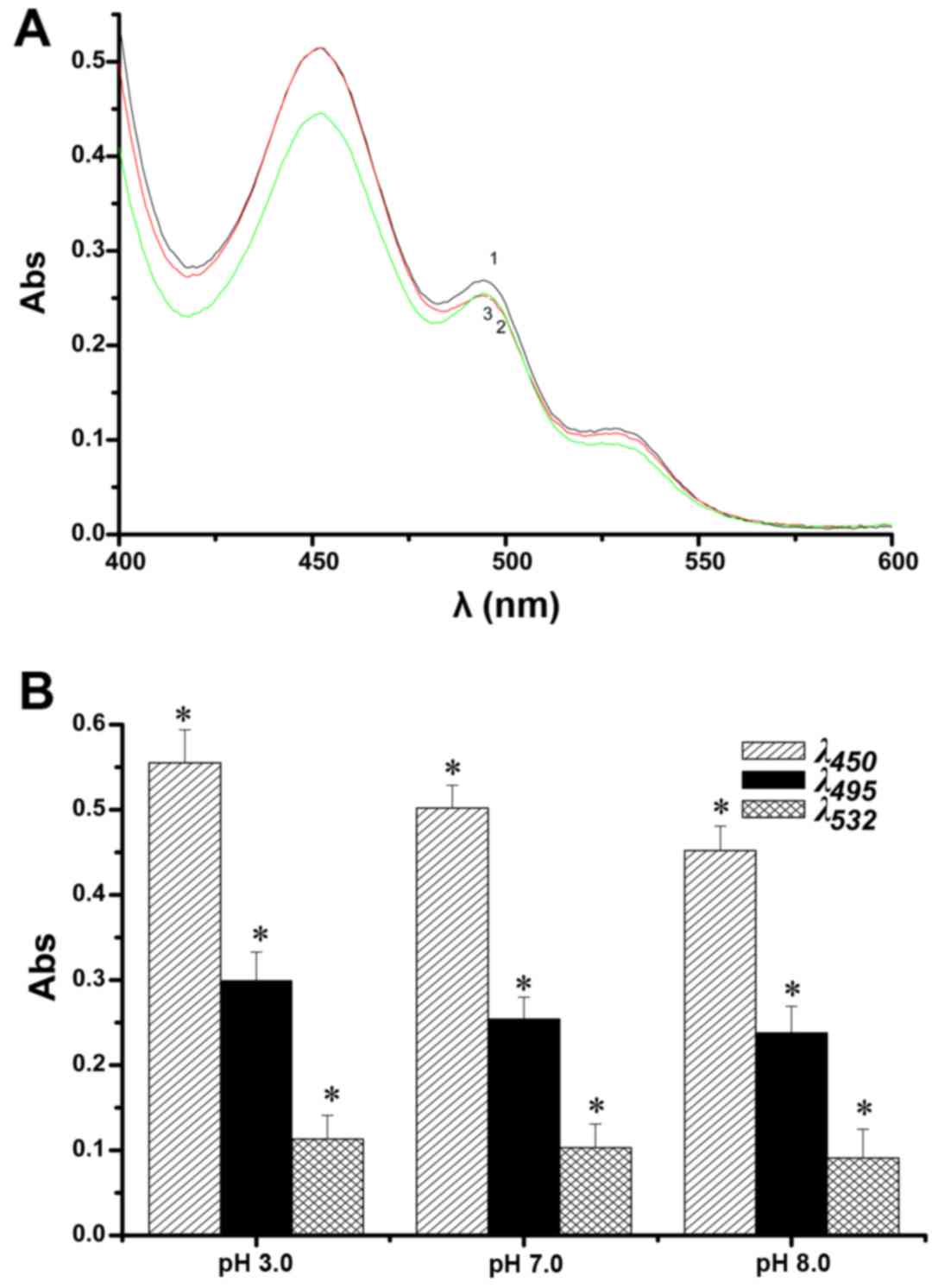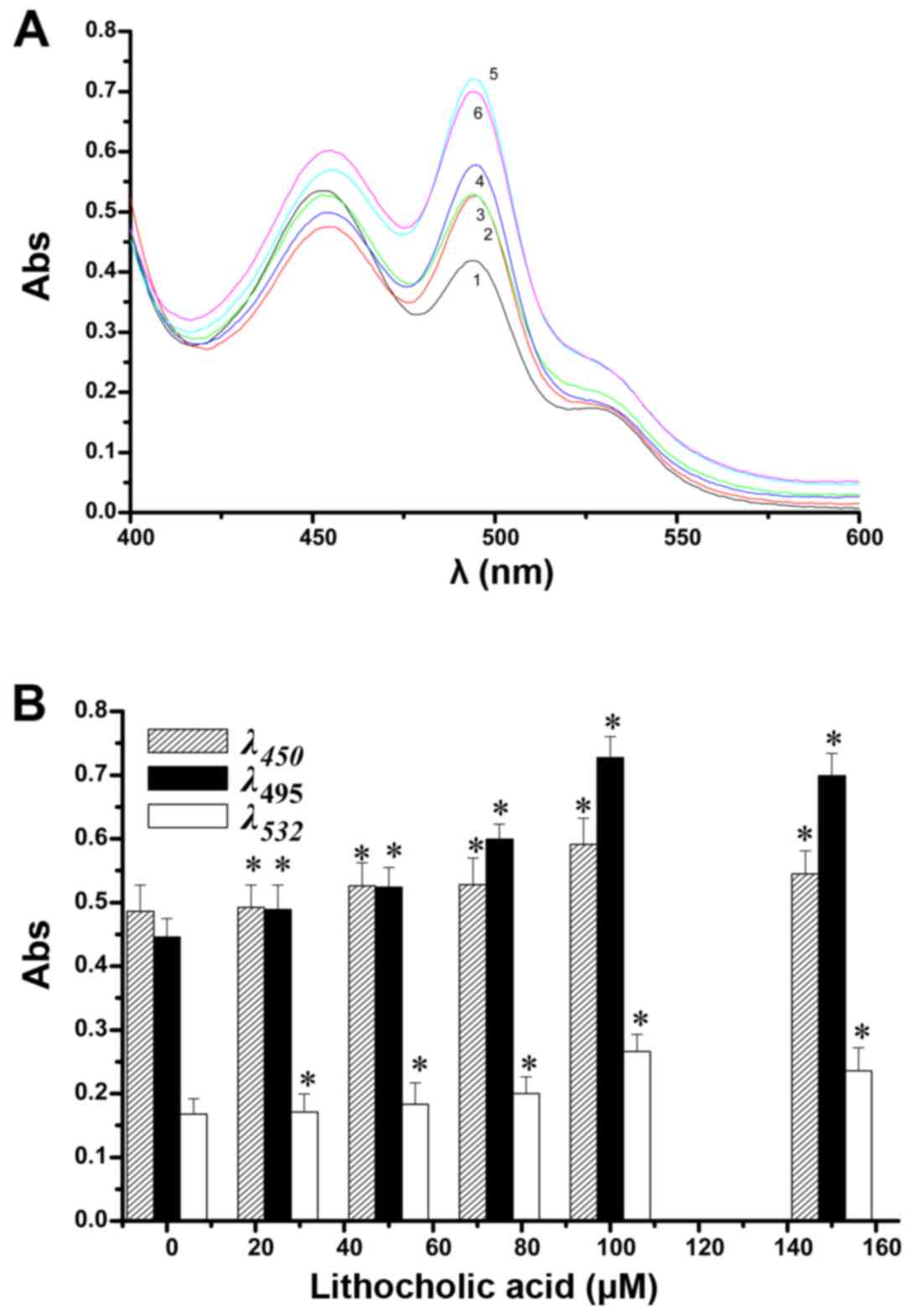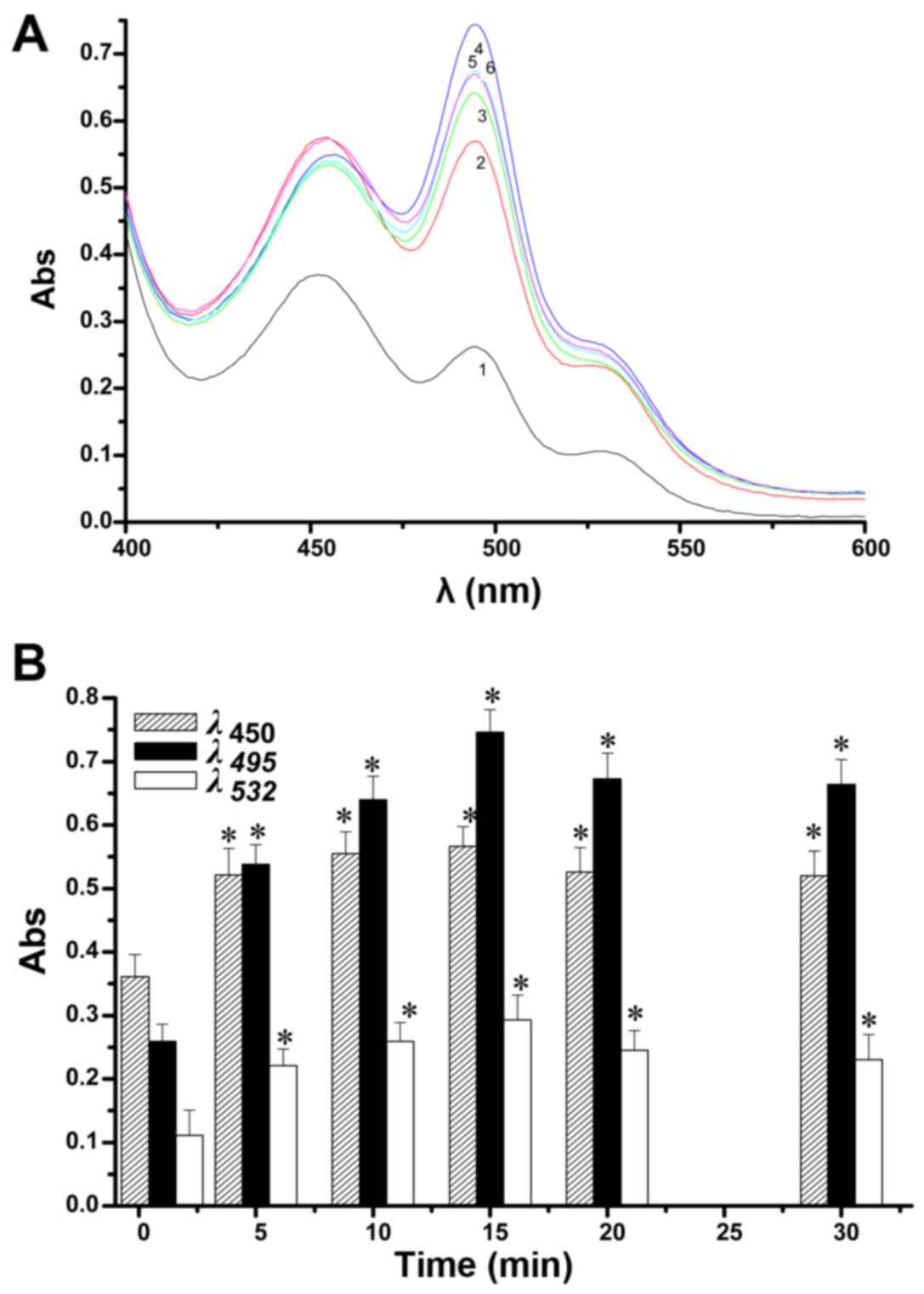|
1
|
Goldberg AA, Beach A, Davies GF, Harkness
TA, Leblanc A and Titorenko VI: Lithocholic bile acid selectively
kills neuroblastoma cells, while sparing normal neuronal cells.
Oncotarget. 2:761–782. 2011. View Article : Google Scholar : PubMed/NCBI
|
|
2
|
Tait SW and Green DR: Mitochondria and
cell death: Outer membrane permeabilization and beyond. Nat Rev Mol
Cell Biol. 11:621–632. 2010. View
Article : Google Scholar : PubMed/NCBI
|
|
3
|
Jourdain A and Martinou JC: Mitochondrial
outer-membrane permeabilization and remodelling in apoptosis. Int J
Biochem Cell Biol. 41:1884–1889. 2009. View Article : Google Scholar : PubMed/NCBI
|
|
4
|
Parsons MJ and Green DR: Mitochondria in
cell death. Essays Biochem. 47:99–114. 2010. View Article : Google Scholar : PubMed/NCBI
|
|
5
|
Miwa S and Brand MD: Mitochondrial matrix
reactive oxygen species production is very sensitive to mild
uncoupling. Biochem Soc Trans. 31:1300–1301. 2003. View Article : Google Scholar : PubMed/NCBI
|
|
6
|
Parker N, Vidal-Puig A and Brand MD:
Stimulation of mitochondrial proton conductance by hydroxynonenal
requires a high membrane potential. Biosci Rep. 28:83–88. 2008.
View Article : Google Scholar : PubMed/NCBI
|
|
7
|
Papa S and Skulachev V: Reactive oxygen
species, mitochondria, apoptosis and aging. Detection of
Mitochondrial Diseases. Gellerich FN and Zierz S: Springer; pp.
305–319. 1997, View Article : Google Scholar
|
|
8
|
Brand MD: Uncoupling to survive? The role
of mitochondrial inefficiency in ageing. Exp Gerontol. 35:811–820.
2000. View Article : Google Scholar : PubMed/NCBI
|
|
9
|
Esterbauer H, Schaur RJ and Zollner H:
Chemistry and biochemistry of 4-hydroxynonenal, malonaldehyde and
related aldehydes. Free Radic Biol Med. 11:81–128. 1991. View Article : Google Scholar : PubMed/NCBI
|
|
10
|
Lee YS and Wurster RD: Potentiation of
anti-proliferative effect of nitroprusside by ascorbate in human
brain tumor cells. Cancer Lett. 78:19–23. 1994. View Article : Google Scholar : PubMed/NCBI
|
|
11
|
Halliwell B and Chirico S: Lipid
peroxidation: Its mechanism, measurement, and significance. Am J
Clin Nutr. 57(Suppl 5): 715S–725S. 1993. View Article : Google Scholar : PubMed/NCBI
|
|
12
|
Draper HH and Hadley M: Malondialdehyde
determination as index of lipid peroxidation. Methods Enzymol.
186:421–431. 1990. View Article : Google Scholar : PubMed/NCBI
|
|
13
|
Benedetti A, Comporti M and Esterbauer H:
Identification of 4-hydroxynonenal as a cytotoxic product
originating from the peroxidation of liver microsomal lipids.
Biochim Biophys Acta. 620:281–296. 1980. View Article : Google Scholar : PubMed/NCBI
|
|
14
|
Witz G, Rao GS and Goldstein BD:
Short-term toxicity of trans, trans-muconaldehyde. Toxicol Appl
Pharmacol. 80:511–516. 1985. View Article : Google Scholar : PubMed/NCBI
|
|
15
|
Patton S and ParkKurtz GW: A note on the
thiobarbituric acid test for milk lipid oxidation. J Dairy Sci.
38:9011955. View Article : Google Scholar
|
|
16
|
Esterbauer H, Cheeseman KH, Dianzani MU,
Poli G and Slater TF: Separation and characterization of the
aldehydic products of lipid peroxidation stimulated by
ADP-Fe2+ in rat liver microsomes. Biochem J.
208:129–140. 1982. View Article : Google Scholar : PubMed/NCBI
|
|
17
|
Sinnhuber RO and Yu TC and Yu TC:
Characterization of the red pigment formed in the 2-thiobarbituric
acid determination of oxidative rancidity. J Food Sci. 23:626–634.
1958. View Article : Google Scholar
|
|
18
|
Witz G, Lawrie NJ, Zaccaria A, Ferran HE
Jr and Goldstein BD: The reaction of 2-thiobarbituric acid with
biologically active alpha, beta-unsaturated aldehydes. J Free Radic
Biol Med. 2:33–39. 1986. View Article : Google Scholar
|
|
19
|
Inci S, Özcan OE and Kilinç K: Time-level
relationship for lipid peroxidation and the protective effect of
α-tocopherol in experimental mild and severe brain injury.
Neurosurgery. 43:330–335; discussion 335-336. 1998. View Article : Google Scholar
|
|
20
|
Nulton-Persson AC and Szweda LI:
Modulation of mitochondrial function by hydrogen peroxide. J Biol
Chem. 276:23357–23361. 2001. View Article : Google Scholar : PubMed/NCBI
|
|
21
|
Lowry OH, Rosebrough NJ, Farr AL and
Randall RJ: Protein measurement with the Folin phenol reagent. J
Biol Chem. 193:265–275. 1951.PubMed/NCBI
|
|
22
|
Ottino P and Duncan JR: Effect of
alpha-tocopherol succinate on free radical and lipid peroxidation
levels in BL6 melanoma cells. Free Radic Biol Med. 22:1145–1151.
1997. View Article : Google Scholar : PubMed/NCBI
|
|
23
|
Malecki EA: Manganese toxicity is
associated with mitochondrial dysfunction and DNA fragmentation in
rat primary striatal neurons. Brain Res Bull. 55:225–228. 2001.
View Article : Google Scholar : PubMed/NCBI
|
|
24
|
Hartley A, Stone JM, Heron C, Cooper JM
and Schapira AH: Complex I inhibitors induce dose-dependent
apoptosis in PC12 cells: Relevance to Parkinson's disease. J
Neurochem. 63:1987–1990. 1994. View Article : Google Scholar : PubMed/NCBI
|
|
25
|
Sugiyama A and Sun J: Immunochemical
detection of lipid hydroperoxide-and aldehyde-modified proteins in
diseases. Lipid Hydroperoxide-Derived Modification of Biomolecules.
Kato Y: Springer; pp. 115–125. 2014, View Article : Google Scholar
|
|
26
|
Park S, You X and Imlay JA: Substantial
DNA damage from submicromolar intracellular hydrogen peroxide
detected in Hpx- mutants of Escherichia coli. Proc Natl Acad Sci
USA. 102:9317–9322. 2005. View Article : Google Scholar : PubMed/NCBI
|
|
27
|
Demple B, Halbrook J and Linn S:
Escherichia coli xth mutants are hypersensitive to hydrogen
peroxide. J Bacteriol. 153:1079–1082. 1983.PubMed/NCBI
|
|
28
|
Carlsson J and Carpenter VS: The
recA+ gene product is more important than catalase and
superoxide dismutase in protecting Escherichia coli against
hydrogen peroxide toxicity. J Bacteriol. 142:319–321.
1980.PubMed/NCBI
|
|
29
|
Imlay JA and Linn S: Bimodal pattern of
killing of DNA-repair-defective or anoxically grown Escherichia
coli by hydrogen peroxide. J Bacteriol. 166:519–527. 1986.
View Article : Google Scholar : PubMed/NCBI
|
|
30
|
Imlay JA, Chin SM and Linn S: Toxic DNA
damage by hydrogen peroxide through the Fenton reaction in vivo and
in vitro. Science. 240:640–642. 1988. View Article : Google Scholar : PubMed/NCBI
|
|
31
|
Mello Filho AC, Hoffmann ME and Meneghini
R: Cell killing and DNA damage by hydrogen peroxide are mediated by
intracellular iron. Biochem J. 218:273–275. 1984. View Article : Google Scholar : PubMed/NCBI
|
|
32
|
Bar-Or D and Winkler JV: Copper is
involved in hydrogen-peroxide-induced DNA damage. Free Radic Biol
Med. 32:197–199. 2002. View Article : Google Scholar : PubMed/NCBI
|
|
33
|
Van Kuijk FJ, Holte LL and Dratz EA:
4-Hydroxyhexenal: A lipid peroxidation product derived from
oxidized docosahexaenoic acid. Biochim Biophys Acta. 1043:116–118.
1990. View Article : Google Scholar : PubMed/NCBI
|
|
34
|
Petersen DR and Doorn JA: Reactions of
4-hydroxynonenal with proteins and cellular targets. Free Radic
Biol Med. 37:937–945. 2004. View Article : Google Scholar : PubMed/NCBI
|
|
35
|
Wawra E, Zollner H, Schaur RJ, Tillian HM
and Schauenstein E: The inhibitory effect of 4-hydroxy-nonenal on
DNA-polymerases alpha and beta from rat liver and rapidly dividing
Yoshida ascites hepatoma. Cell Biochem Funct. 4:31–36. 1986.
View Article : Google Scholar : PubMed/NCBI
|
|
36
|
Goldkorn T, Balaban N, Matsukuma K, Chea
V, Gould R, Last J, Chan C and Chavez C: EGF-Receptor
phosphorylation and signaling are targeted by
H2O2 redox stress. Am J Respir Cell Mol Biol.
19:786–798. 1998. View Article : Google Scholar : PubMed/NCBI
|
|
37
|
Huang RP, Peng A, Golard A, Hossain MZ,
Huang R, Liu YG and Boynton AL: Hydrogen peroxide promotes
transformation of rat liver non-neoplastic epithelial cells through
activation of epidermal growth factor receptor. Mol Carcinog.
30:209–217. 2001. View Article : Google Scholar : PubMed/NCBI
|
|
38
|
Petruzzelli S, Hietanen E, Bartsch H,
Camus AM, Mussi A, Angeletti CA, Saracci R and Giuntini C:
Pulmonary lipid peroxidation in cigarette smokers and lung cancer
patients. Chest. 98:930–935. 1990. View Article : Google Scholar : PubMed/NCBI
|
|
39
|
Esterbauer H and Zollner H: Methods for
determination of aldehydic lipid peroxidation products. Free Radic
Biol Med. 7:197–203. 1989. View Article : Google Scholar : PubMed/NCBI
|
|
40
|
Esterbauer H, Zollner H and Scholz N:
Reaction of glutathione with conjugated carbonyls. Z Naturforsch C.
30:466–473. 1975.PubMed/NCBI
|
|
41
|
Poot M, Verkerk A, Koster JF, Esterbauer H
and Jongkind JF: Influence of cumene hydroperoxide and
4-hydroxynonenal on the glutathione metabolism during in vitro
ageing of human skin fibroblasts. Eur J Biochem. 162:287–291. 1987.
View Article : Google Scholar : PubMed/NCBI
|
|
42
|
Dogterom P, Mulder GJ and Nagelkerke JF:
Lipid peroxidation-dependent and -independent protein thiol
modifications in isolated rat hepatocytes: Differential effects of
vitamin E and disulfiram. Chem Biol Interact. 71:291–306. 1989.
View Article : Google Scholar : PubMed/NCBI
|
|
43
|
Poot M, Verkerk A, Koster JF, Esterbauer H
and Jongkind JF: Reversible inhibition of DNA and protein synthesis
by cumene hydroperoxide and 4-hydroxy-nonenal. Mech Ageing Dev.
43:1–9. 1988. View Article : Google Scholar : PubMed/NCBI
|
|
44
|
Esterbauer H: Kinetics of the reaction of
sulfhydryl compounds with alpha-beta-unsaturated aldehydes in
aqueous system. Monatsh Chem. 101:782–810. 1970. View Article : Google Scholar
|
|
45
|
Witz G: Biological interactions of
α,β-unsaturated aldehydes. Free Radic Biol Med. 7:333–349. 1989.
View Article : Google Scholar
|
|
46
|
Grafström RC, Dypbukt JM, Willey JC,
Sundqvist K, Edman C, Atzori L and Harris CC: Pathobiological
effects of acrolein in cultured human bronchial epithelial cells.
Cancer Res. 48:1717–1721. 1988.PubMed/NCBI
|
|
47
|
Cox R, Goorha S and Irving CC: Inhibition
of DNA methylase activity by acrolein. Carcinogenesis. 9:463–465.
1988. View Article : Google Scholar : PubMed/NCBI
|















